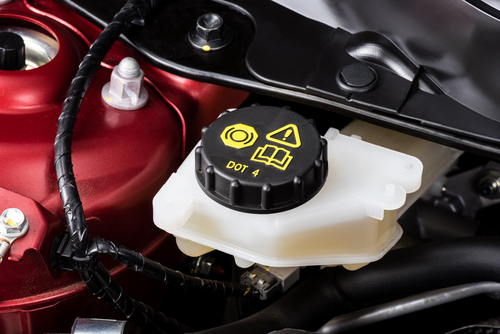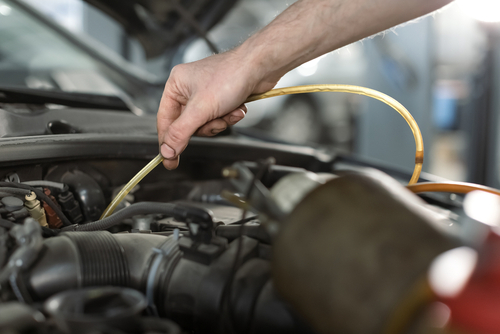Answer:
No, a bad brake booster will not cause the pedal to go to the floor. It has the opposite effect. A brake booster MULTIPLIES your pedal input pressure. So, when it doesn’t work, the pedal is HARDER to push.
OK, Now that We Know What the Brake Booster Does, What’s Causing the Pedal to Hit the Floor?
When you’re dealing with brake issues, one of the most alarming experiences can be when your brake pedal sinks to the floor.
If you’re facing this issue, it’s crucial to understand the potential causes behind it, especially concerning your vehicle’s brake booster.
Let’s dive into why this happens and what you should be aware of to address it effectively.
First off, the brake booster plays a pivotal role in your braking system. It multiplies the force you apply to the brake pedal, making it easier to stop your vehicle. So, when the brake pedal hits the floor, it’s often a sign of underlying problems that need immediate attention.

Loss of Brake Fluid: One of the most common reasons for a sinking brake pedal is a loss of brake fluid. This can be due to leaks in the brake lines, calipers, or the master cylinder itself. Without adequate fluid pressure, your brake system cannot function correctly.
Check for any visible leaks under your car or on the wheels. A low fluid level in the brake fluid reservoir is a telltale sign that you’re dealing with a leak.
Faulty Master Cylinder: The master cylinder is the heart of your braking system. If it fails, it can cause the brake pedal to sink to the floor.
Over time, the seals inside the master cylinder can wear out, leading to internal leaks and a loss of pressure. Unlike external leaks, you won’t see fluid pooling under your car, making this issue a bit trickier to diagnose.
Compromised Brake Booster: While less common, a problem with the brake booster itself can also lead to a sinking pedal, especially if it’s not providing enough boost or if there’s a vacuum leak.
The booster relies on vacuum pressure from the engine to amplify your braking effort. Any disruption in this pressure can impact your brake pedal’s feel and effectiveness.
What You Can Do:

- Check the Brake Fluid: Start by checking the brake fluid level and topping it off if it’s low. However, remember this is a temporary fix, and identifying the leak is crucial.
- Inspect for Leaks: Carefully inspect all brake lines, hoses, and connections for signs of leaks. Pay special attention to the area around the master cylinder and brake calipers.
- Listen for Vacuum Leaks: With the engine running, listen for hissing sounds near the brake booster, which can indicate a vacuum leak.
- Professional Inspection: Given the critical nature of your braking system, seeking professional help is advisable if you’re not experienced in brake repairs. A certified mechanic can provide a thorough diagnosis and repair.
Addressing a brake pedal that sinks to the floor is not just about restoring proper function; it’s a matter of safety for you and others on the road. Don’t delay in seeking a solution, and always prioritize thorough diagnostics to ensure a comprehensive fix. Your peace of mind and safety are worth the effort.
How Often to Flush Brake Fluid
The general recommendation is to flush your brake fluid every 2 to 3 years. However, this can vary based on your vehicle’s make, model, and the conditions under which you drive. Here’s why it’s important and what factors might affect this timeline:
Why It’s Necessary:
Brake fluid operates in a closed system and is designed to withstand high temperatures. Over time, it absorbs moisture from the environment, which can lower its boiling point and reduce its effectiveness. Moisture in the system also leads to corrosion of the brake parts. Flushing the system removes the old, contaminated fluid and replaces it with new fluid, maintaining the system’s integrity and performance.
Factors Affecting Frequency:
- Manufacturer’s Recommendations: Always start with your vehicle’s owner manual. Manufacturers often provide a specific interval for brake fluid replacement.
- Driving Conditions: Frequent stop-and-go driving, heavy usage, or driving in highly humid environments can lead to the brake fluid absorbing moisture faster, necessitating more frequent changes.
- Type of Brake Fluid: Different types of brake fluid (DOT 3, DOT 4, DOT 5, DOT 5.1) have varying properties and tolerances for moisture absorption. Higher performance fluids may require more frequent changes.
- Vehicle Age: Older vehicles may require more frequent brake fluid changes due to less efficient sealing and moisture prevention over time.
Checking Brake Fluid Condition:
You can also check the condition of your brake fluid. If it appears dark or dirty, it’s a clear sign that it needs to be changed. Some vehicles are equipped with brake fluid condition sensors, and a warning light will illuminate on your dashboard when a change is needed.
Remember, maintaining your brake fluid isn’t just about sticking to a schedule; it’s about ensuring the safety and reliability of your brakes. If you’re unsure about the condition of your brake fluid or how to change it, consult with a professional mechanic. They can provide advice tailored to your specific vehicle and driving habits.
